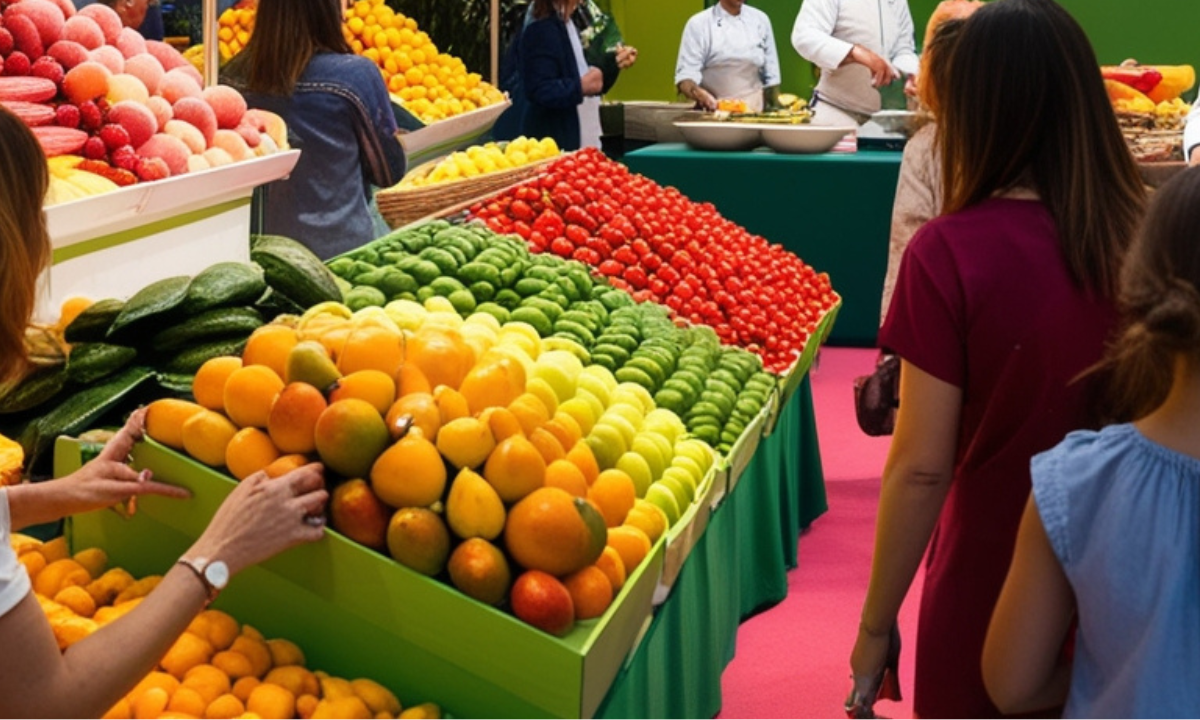Meal Planning Tips for Beginners, Meal planning can transform your cooking experience, making it easier, more affordable, and less wasteful. For beginners, the concept might sound daunting, especially when juggling busy schedules and trying to maintain a balanced diet.
But with some basic steps and a few guiding principles, meal planning can become second nature. Whether your goal is to save time, stick to a budget, or simply eat healthier, meal planning can help you accomplish these aims effortlessly.
In this guide, we’ll explore the essentials of meal planning, step by step, so that by the end, you’ll have a clear understanding of how to create a meal plan that fits seamlessly into your lifestyle.
Key Takeaways
- Meal planning helps save time and reduce food waste.
- A grocery list is essential for easier shopping.
- Prep work makes cooking at home simple and enjoyable.
- Planning meals in advance can cut down on food costs.
- Having a meal plan makes healthy choices easier.
What is Meal Planning?
Meal planning means deciding in advance what meals you’ll have during the week. Instead of figuring out each day’s meal on the spot, you create a plan to cover your needs. This way, you buy only what you need, use ingredients efficiently, and skip the daily stress of deciding what to eat. Whether you plan every meal or just dinner, it helps make cooking and grocery shopping easier.
Benefits of Meal Planning
Meal planning has many benefits. First, it saves time—you won’t spend as much time in the kitchen or grocery store. It also helps you save money, as you’ll avoid impulse buys and stick to a list. Plus, planning meals gives you better control over ingredients, so it’s easier to make healthy choices.
Planning meals also means fewer last-minute takeout decisions, which can be pricier and less healthy. You’re likely to enjoy a greater variety of meals and avoid food boredom, too. Additionally, meal planning reduces food waste. With a clear plan, you use what you buy and avoid tossing forgotten items.
Getting Started: A Step-by-Step Guide
Step 1: Determine Your Weekly Meal Needs
Think about how many meals you need for the week. Consider any planned dinners out, busy days, or family gatherings. Knowing your weekly needs helps avoid over- or under-planning so you don’t waste food or run short. It’s best to start small by planning only dinners or a few days of meals to ease into the routine.
Step 2: Choose Your Recipes
Pick recipes that fit your schedule and preferences. Start with familiar meals, then gradually add variety. Look for recipes that use ingredients you already have or can use in multiple dishes. Try a balanced mix, like easy weekday meals and a few new recipes for weekends. This keeps meals interesting without overwhelming you.
Step 3: Make Your Shopping List
Create a grocery list based on the ingredients needed for your meals. This list ensures you buy only what’s necessary, making shopping quicker and more efficient. Check your pantry and fridge before shopping to avoid duplicates. An organized list grouped by store sections (produce, pantry, dairy, etc.) will save even more time.
Step 4: Prepare for Meal Prep Day
Choose a day for meal prep. Many people prefer Sundays, but choose a day that works best for you. On meal prep day, you can wash, chop, and cook some ingredients, then store them in the fridge or freezer. This prep work cuts down on daily cooking time and keeps your kitchen organized.
Sample Weekly Meal Plan Template
| Day | Breakfast | Lunch | Dinner |
|---|---|---|---|
| Monday | Oatmeal with berries | Grilled chicken salad | Veggie stir-fry with rice |
| Tuesday | Smoothie with spinach | Turkey sandwich with avocado | Tacos with beans and salsa |
| Wednesday | Greek yogurt with honey | Quinoa salad with veggies | Chicken pasta with marinara |
| Thursday | Scrambled eggs with toast | Leftover chicken pasta | Beef chili with cornbread |
| Friday | Fruit and yogurt parfait | Veggie wrap with hummus | Baked salmon with veggies |
| Saturday | Pancakes with fruit | Leftover beef chili | Stir-fried tofu with noodles |
| Sunday | Breakfast burrito | Light salad | Roast chicken with potatoes |
This template provides a balanced weekly plan with a variety of flavors. Adjust it to suit your preferences and dietary needs.
Meal Prep Tips for Easier Cooking
Meal prep makes it easier to stick to your meal plan. Start by prepping ingredients you’ll use throughout the week, such as chopping vegetables or marinating proteins. You can also batch-cook items like grains or sauces, which you can use in several meals.
A good approach is to cook large portions and store meals in individual containers. This is helpful for grab-and-go options like salads or pasta, making it easier to reheat and eat with minimal effort. The more prep you do upfront, the less you’ll have to cook each day.
Storing and Organizing Your Ingredients
Proper storage is key to meal planning success. Use containers that keep food fresh, and label each one with the date to track freshness. For perishable items, store them in the fridge, while pantry staples can go in a cool, dry spot. If you’re cooking in large batches, store some portions in the freezer, which extends their shelf life and prevents waste.
Food Storage Guide for Meal Planning
| Food Type | Storage Method | Shelf Life |
|---|---|---|
| Cooked grains (rice, quinoa) | Fridge (3-5 days) / Freezer (up to 2 months) | |
| Fresh vegetables | Fridge (up to 1 week) | Blanch and freeze if needed |
| Proteins (chicken, beef) | Fridge (1-2 days raw, 3-4 days cooked) / Freezer (up to 6 months) | |
| Sauces and soups | Fridge (up to 1 week) / Freezer (up to 3 months) | |
| Herbs | Fridge wrapped in a damp towel, or freeze | Fresh for 1-2 weeks in fridge |
Using this storage guide helps maintain food freshness and reduces waste, ensuring that ingredients last throughout the week.
How to Stick to Your Meal Plan
It’s easy to start meal planning, but consistency is the key to success. To stay on track, keep your meals simple and manageable. If something doesn’t work, adjust your plan and try a new approach next week. Over time, you’ll find a rhythm that fits your lifestyle.
Reviewing your meal plan at the end of the week helps you identify what worked well and what didn’t. For example, if a certain meal took too long to prepare, you might swap it for a quicker recipe next time. Meal planning is flexible, so feel free to make changes as you go.
FAQs About Meal Planning
Q1. What’s the difference between meal planning and meal prep?
Meal planning is deciding what to eat, while meal prep is preparing ingredients in advance. Together, they make weekly meals more manageable.
Q2. How can I meal plan on a budget?
Use versatile ingredients like beans, grains, and seasonal produce, and buy in bulk to save money. Planning ahead reduces waste and cuts down on unnecessary purchases.
Q3. How do I avoid food waste with meal planning?
Only buy what you need, use leftovers creatively, and store food properly to keep it fresh. Planning for specific meals helps you avoid excess ingredients.
How to Set Realistic Meal Planning Goals
Setting goals is essential for a successful meal-planning journey. Whether you aim to save money, eat healthier, or reduce stress around mealtime, having a clear purpose can guide your planning decisions. For beginners, it’s best to start with small, achievable goals to avoid feeling overwhelmed.
Define Your Primary Goal
Start by asking yourself why you want to meal plan. Are you trying to cut grocery costs, simplify your cooking routine, or make healthier choices? Your primary goal will help shape your approach. For example, if saving money is a top priority, you might focus on budget-friendly recipes and use bulk ingredients. If healthier eating is your aim, you can focus on balanced meals with more fruits and vegetables.
Set Realistic Expectations
Meal planning doesn’t mean cooking from scratch every day. Set realistic expectations based on your schedule and energy levels. If you’re new to meal planning, consider planning just three to five meals per week. This allows flexibility and helps you ease into the process without the pressure to plan every meal.
Choosing Recipes Based on Your Schedule
Selecting recipes that fit your lifestyle is key to making meal planning sustainable. Different days bring different time constraints, so choose recipes accordingly.
Quick Meals for Busy Days
On days when time is tight, plan for quick and simple meals. Dishes like stir-fries, pasta with vegetables, or slow-cooker recipes are excellent options for busy schedules. They require minimal preparation and still provide a nutritious meal.
Experiment on Weekends or Days Off
For weekends or days with more free time, you can experiment with new recipes or dishes that take longer to cook. This could be a great opportunity to try out a new baking recipe or prepare a larger meal that creates leftovers for the week.
Planning for Leftovers
Leftovers can be a lifesaver for busy weekdays. Incorporating them into your meal plan helps reduce food waste, saves time, and provides ready-made meals.
How to Use Leftovers in New Ways
Get creative with leftovers by repurposing them in new dishes. For example, roast chicken can be turned into sandwiches, salads, or stir-fries. By planning meals that can be transformed, you’ll get more out of each ingredient.
Storing Leftovers Safely
Store leftovers in airtight containers and label them with the date. For dishes that freeze well, such as soups or stews, portion them out and freeze for future meals. This extends their shelf life and provides an easy meal option later.
Using Themes to Simplify Meal Planning
Themes can make meal planning more fun and easier to manage. Weekly themes add variety while reducing the time spent choosing recipes.
Popular Theme Ideas
Themes like “Taco Tuesday” or “Meatless Monday” can give structure to your week. Each theme gives a specific focus for meal planning, making it easier to select recipes. Other popular themes include “Soup Sunday,” “Pasta Night,” or “Breakfast for Dinner.”
Rotating Themes for Variety
Rotating themes helps keep meals interesting. For example, you might choose “Stir-Fry Friday” one week and switch to “Pizza Friday” the next. This approach keeps things fresh and lets you explore new dishes without having to start from scratch each week.
How to Adapt Meal Plans for Dietary Needs
Dietary preferences or restrictions don’t have to complicate meal planning. Adapting your meal plan to fit dietary needs simply requires a few adjustments.
Incorporating Special Diets
Whether you’re vegetarian, gluten-free, or following a specific health plan, there are meal planning options for everyone. Choose recipes that suit your dietary needs and consider meal prep substitutions for ingredients you can’t eat. For example, if a recipe calls for pasta, swap it with gluten-free pasta if needed.
Balancing Nutrients
When adapting a meal plan for specific diets, focus on balanced nutrition. For example, if you’re planning vegetarian meals, ensure you’re including protein sources like beans, lentils, or tofu. Balanced meals keep you satisfied and make it easier to stick to your plan.
My Opinion
Meal planning can make a big difference in your daily routine. By planning meals ahead, you save time, reduce food waste, and make healthier choices. Start small, keep it simple, and build a routine that works for you. Meal planning doesn’t need to be perfect—just consistent. With practice, you’ll find it becomes a natural part of your week, allowing you to enjoy home-cooked meals with ease.





